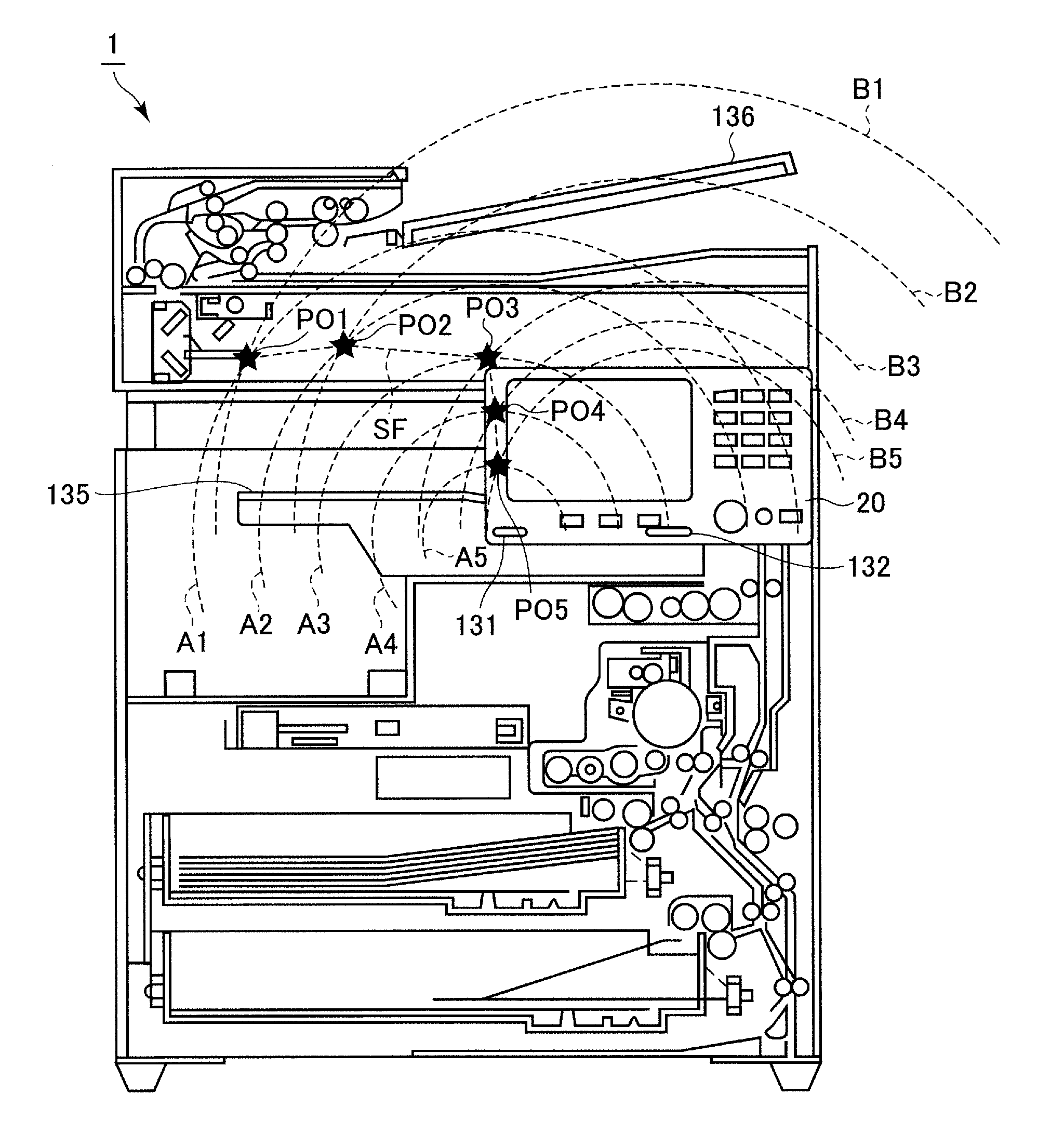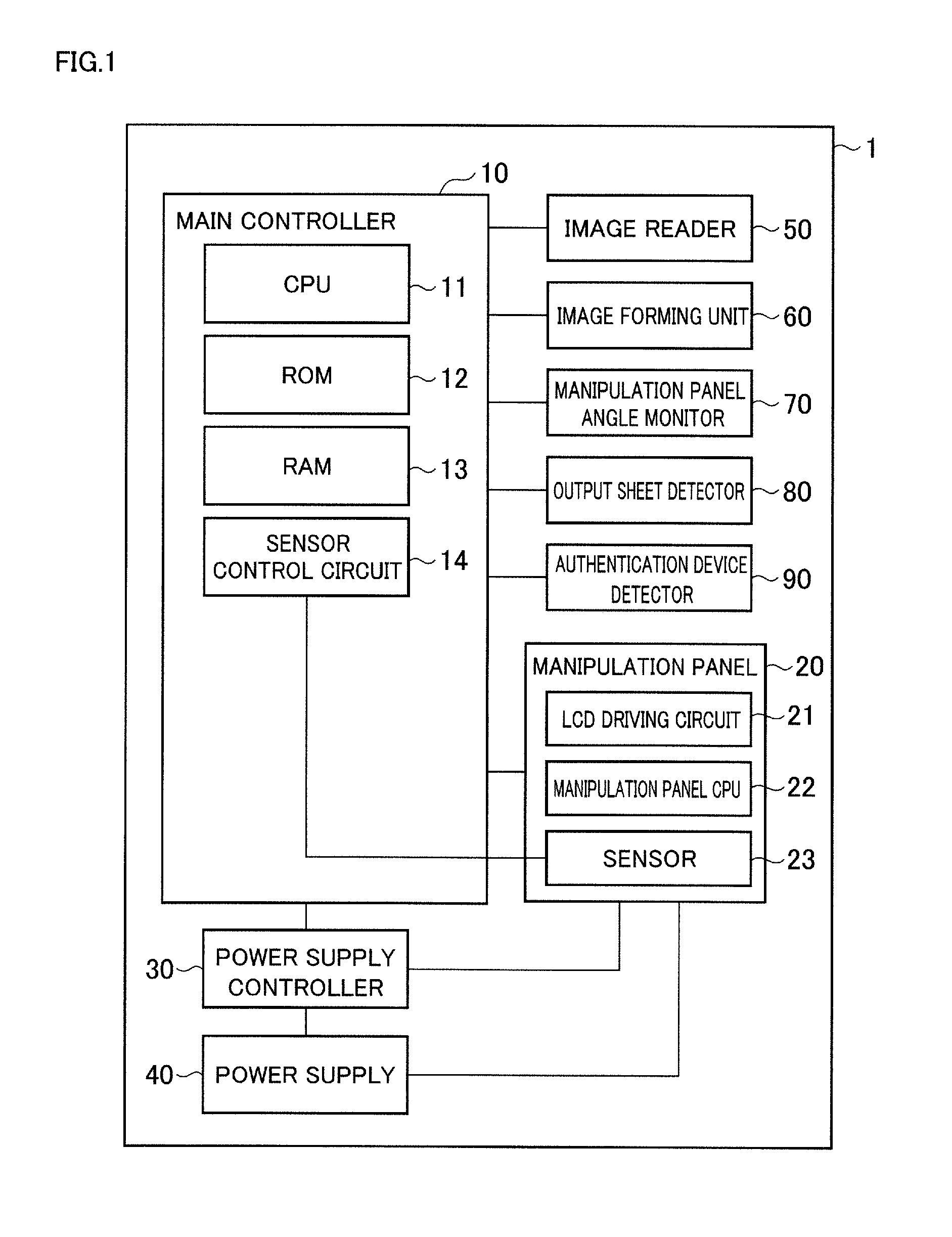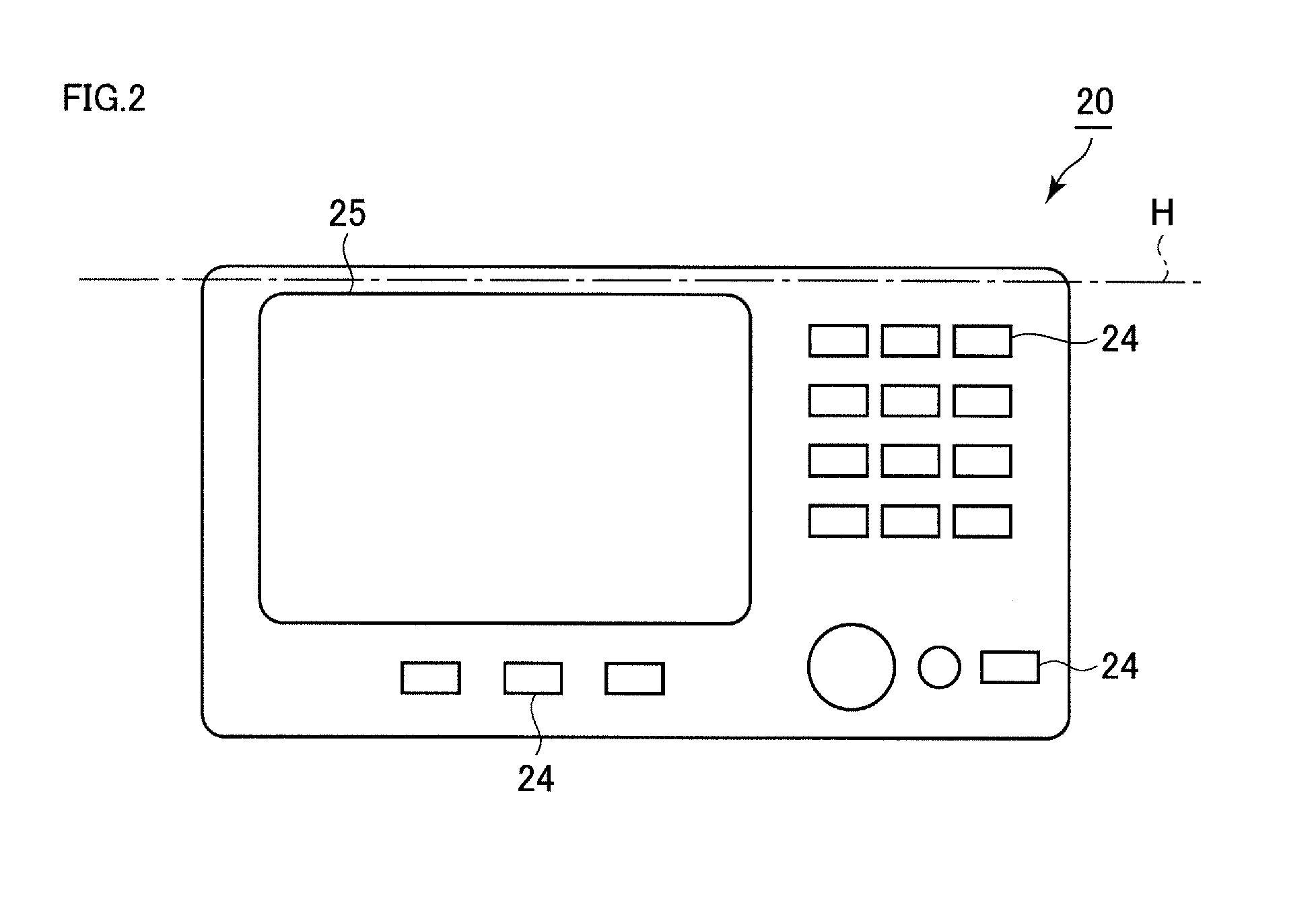Image forming apparatus capable of changing operating state
- Summary
- Abstract
- Description
- Claims
- Application Information
AI Technical Summary
Benefits of technology
Problems solved by technology
Method used
Image
Examples
first modification
[First Modification]
[0097]In the above embodiment, only one human body detecting distance table is stored in ROM 12. The case where a plurality of human body detecting distance tables are stored in ROM 12 will be described in a first modification.
[0098]FIG. 13 is a view schematically illustrating a second human body detecting distance table.
[0099]Referring to FIG. 13, the second human body detecting distance table differs from the human body detecting distance table in FIG. 11 in that crossing point PO1 of boundary line A1 and boundary line B1, crossing point PO2 of boundary line A2 and boundary line B2, crossing point PO3 of boundary line A3 and boundary line B3, crossing point PO4 of boundary line A4 and boundary line B4, crossing point PO5 of boundary line A5 and boundary line B5, and crossing point PO6 of boundary line A6 and boundary line B6 are each located out of the detection range of sensor 23.
[0100]The human body detecting distance table in FIG. 11 and the human body detec...
second modification
[Second Modification]
[0102]In the above embodiment, antennas A and B detect the distance to the human body in the stepwise manner. The case where antennas A and B continuously detect the distance to the human body will be described in a second modification.
[0103]FIG. 14 is a view schematically illustrating a third human body detecting distance table.
[0104]Referring to FIG. 14, the third human body detecting distance table may be used in the case where antennas A and B continuously detect the distance to the human body. The third human body detecting distance table illustrates whether a combination of the range including the distance to the human body detected by antenna A and the range including the distance to the human body detected by antenna B falls within the detection range. The range of the distance detected by antenna A is divided into three ranges: a range of distances D1 and D2, a range of distances D2 and D3, and a range of distances D3 and D4. The range of distance detec...
third modification
[Third Modification]
[0106]The case where the detection range of sensor 23 is set based on the existence or non-existence of the output to the sheet discharge unit of copying machine 1 or the existence or non-existence of the placement of the authentication device in copying machine 1 will be described in a third modification.
[0107]FIG. 15 is a view schematically illustrating a relationship between sheet discharge unit 135 and the detectable ranges of antennas 131 and 132.
[0108]Referring to FIG. 15, copying machine 1 includes sheet discharge unit 135 that is disposed in the central portion thereof. The output (sheet on which the image is printed) is discharged from the main body of copying machine 1 to sheet discharge unit 135. Angle θ of manipulation panel 20 can be changed. FIG. 15 illustrates the state in which manipulation panel 20 is in the perpendicular state (angle θ of 90 degrees). Sensor 23 includes a plurality of rod-shaped antennas 131 and 132 that are disposed at position...
PUM
 Login to View More
Login to View More Abstract
Description
Claims
Application Information
 Login to View More
Login to View More - Generate Ideas
- Intellectual Property
- Life Sciences
- Materials
- Tech Scout
- Unparalleled Data Quality
- Higher Quality Content
- 60% Fewer Hallucinations
Browse by: Latest US Patents, China's latest patents, Technical Efficacy Thesaurus, Application Domain, Technology Topic, Popular Technical Reports.
© 2025 PatSnap. All rights reserved.Legal|Privacy policy|Modern Slavery Act Transparency Statement|Sitemap|About US| Contact US: help@patsnap.com



